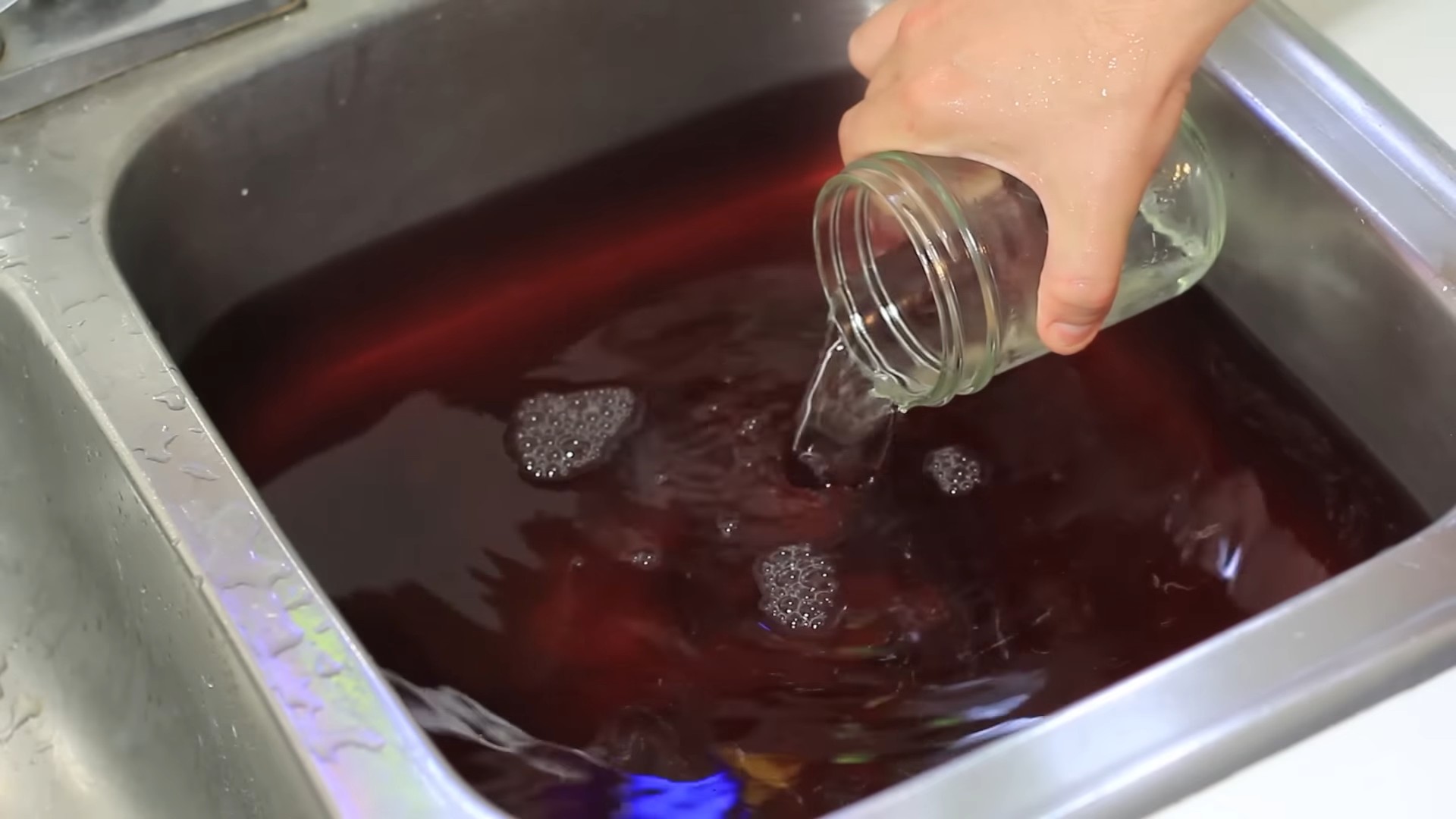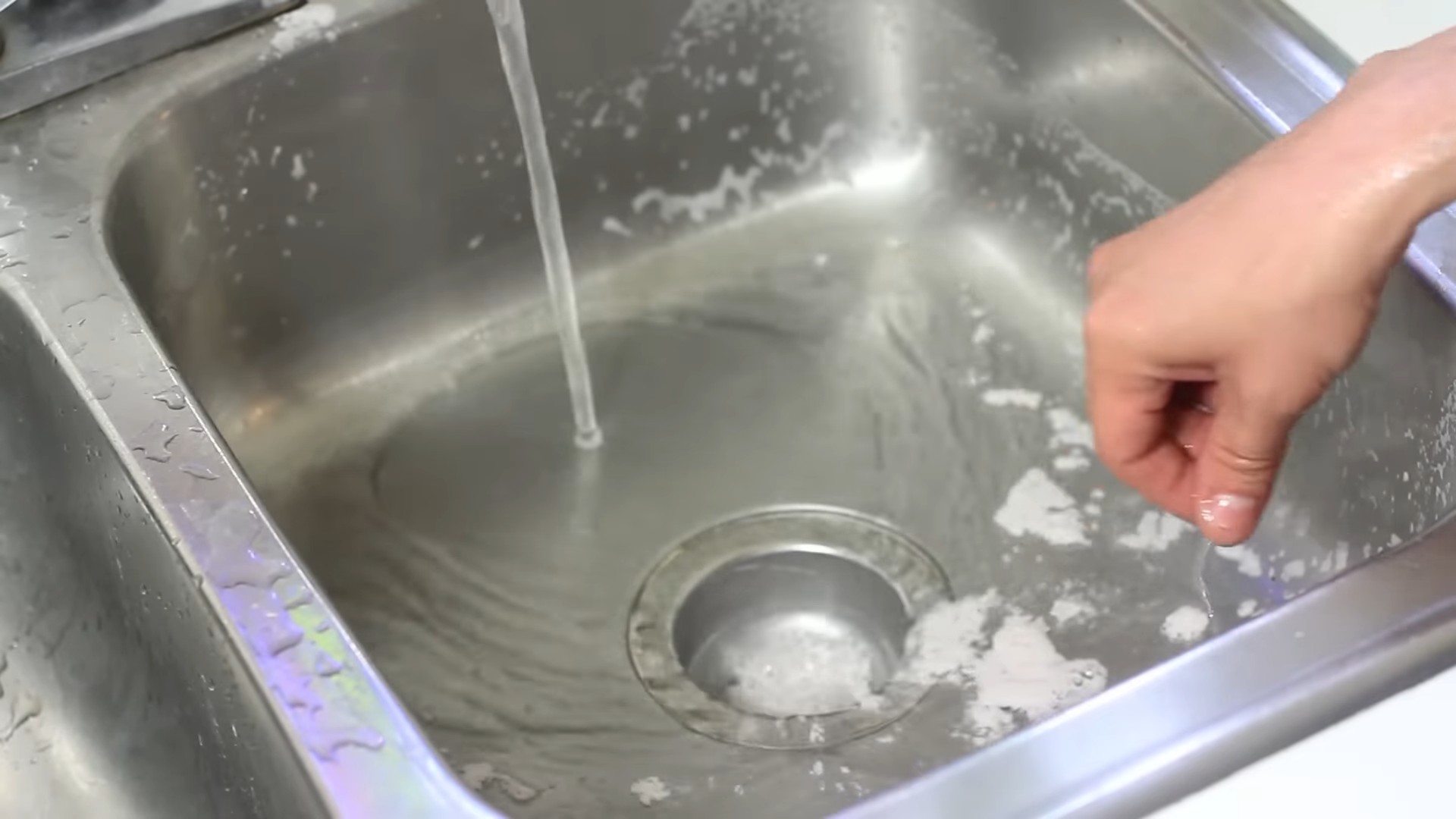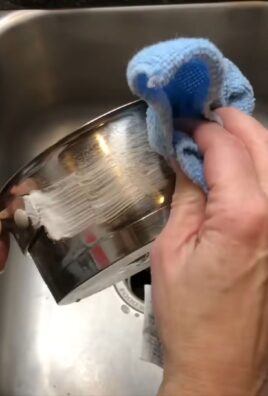White vinegar cleaning tricks are about to become your new best friend! Seriously, forget those expensive, chemical-laden cleaners. I’m going to let you in on a little secret: that humble bottle of white vinegar sitting in your pantry is a powerhouse of cleaning potential, just waiting to be unleashed.
For generations, vinegar has been a staple in households, not just for cooking, but for its incredible cleaning properties. Think back to your grandmother’s cleaning rituals – chances are, vinegar played a starring role! Its use dates back centuries, with evidence suggesting ancient civilizations utilized its acidic nature for various cleaning and disinfecting purposes. It’s a time-tested, natural solution that’s stood the test of time.
But why should you embrace these white vinegar cleaning tricks today? Well, for starters, it’s incredibly budget-friendly. We all want to save a few bucks, right? More importantly, it’s a fantastic eco-friendly alternative to harsh chemicals that can be harmful to your family and the environment. Plus, many of us are looking for simpler, more natural ways to keep our homes sparkling. This article will give you the best DIY cleaning hacks using white vinegar, from tackling stubborn stains to deodorizing your entire home. Get ready to ditch the chemicals and embrace the power of vinegar!

Unlocking the Cleaning Power of White Vinegar: Your Ultimate DIY Guide
Hey there, fellow cleaning enthusiasts! I’m so excited to share my favorite DIY cleaning hacks using the humble, yet mighty, white vinegar. Seriously, this stuff is a game-changer. It’s cheap, readily available, and incredibly versatile. Forget those expensive, chemical-laden cleaners – vinegar can tackle a surprising number of household chores. Let’s dive in!
Why White Vinegar?
Before we get started, let’s quickly touch on why white vinegar is such a cleaning superstar. It’s a mild acid, which means it’s fantastic at dissolving mineral deposits, grease, and grime. Plus, it’s a natural disinfectant and deodorizer. And the best part? It’s non-toxic and eco-friendly!
General Tips for Using White Vinegar
* Dilution is Key: Always dilute white vinegar with water, especially when cleaning delicate surfaces. A 1:1 ratio (equal parts vinegar and water) is a good starting point for most tasks.
* Test First: Before cleaning any surface with vinegar, test it in an inconspicuous area to make sure it doesn’t cause any damage or discoloration.
* Ventilation is Important: While vinegar is non-toxic, the smell can be a bit strong. Make sure to open windows or turn on a fan while you’re cleaning.
* Don’t Mix with Bleach: This is a big one! Mixing vinegar with bleach creates toxic chlorine gas, which can be extremely dangerous.
* Use White Vinegar Only: Avoid using other types of vinegar, like apple cider vinegar or balsamic vinegar, as they can stain surfaces.
Cleaning Your Kitchen with White Vinegar
The kitchen is a breeding ground for grime, but don’t worry, vinegar is here to help!
Cleaning the Microwave
My microwave is constantly getting splattered with food. Here’s how I keep it clean with vinegar:
1. Prepare the Solution: In a microwave-safe bowl, mix 1 cup of water and 1/4 cup of white vinegar.
2. Microwave It: Place the bowl in the microwave and heat it on high for 5 minutes. The steam will loosen the grime.
3. Let it Sit: Leave the door closed for another 5 minutes to allow the steam to work its magic.
4. Wipe Clean: Carefully remove the bowl (it will be hot!) and wipe down the inside of the microwave with a clean cloth or sponge. The grime should come off easily. For stubborn spots, you can dip the cloth in the vinegar solution.
Degreasing Your Stovetop
Grease buildup on the stovetop is a common problem. Here’s how I tackle it with vinegar:
1. Remove Grates and Burner Caps: Take off the grates and burner caps from your stovetop.
2. Spray with Vinegar: Spray the stovetop liberally with a 1:1 solution of white vinegar and water.
3. Let it Sit: Allow the vinegar solution to sit for 10-15 minutes to loosen the grease.
4. Wipe Clean: Wipe down the stovetop with a clean cloth or sponge. For stubborn grease, you can use a scrub brush or a paste made from baking soda and vinegar.
5. Clean Grates and Burner Caps: Soak the grates and burner caps in a sink filled with hot, soapy water and 1/2 cup of white vinegar. Scrub them clean and rinse thoroughly.
Cleaning the Dishwasher
Did you know you can use vinegar to clean your dishwasher? It helps remove mineral deposits and keeps it running smoothly.
1. Empty the Dishwasher: Make sure your dishwasher is empty.
2. Vinegar Rinse: Place a dishwasher-safe cup filled with 1 cup of white vinegar on the top rack.
3. Run a Cycle: Run the dishwasher on a hot cycle.
4. Repeat Monthly: I try to do this once a month to keep my dishwasher in tip-top shape.
Freshening Up the Garbage Disposal
Garbage disposals can get pretty stinky. Here’s how to freshen it up with vinegar:
1. Make Vinegar Ice Cubes: Pour white vinegar into an ice cube tray and freeze.
2. Grind the Cubes: Drop a few vinegar ice cubes into the garbage disposal and run it with cold water. The ice will help dislodge any food particles, and the vinegar will neutralize odors.
Cleaning Your Bathroom with White Vinegar
The bathroom is another area where vinegar shines. It’s great for removing soap scum, mildew, and hard water stains.
Cleaning Showerheads
Showerheads can get clogged with mineral deposits, reducing water pressure. Here’s how to clean them with vinegar:
1. Vinegar Soak: Fill a plastic bag with white vinegar.
2. Secure the Bag: Place the bag over the showerhead, making sure the showerhead is submerged in the vinegar. Secure the bag with a rubber band or twist tie.
3. Soak Overnight: Let the showerhead soak overnight.
4. Remove and Rinse: Remove the bag and rinse the showerhead thoroughly with water. You can use an old toothbrush to scrub away any remaining deposits.
Removing Soap Scum from Shower Doors
Soap scum can be a real pain to remove. Here’s how I tackle it with vinegar:
1. Vinegar Spray: Spray the shower doors liberally with a 1:1 solution of white vinegar and water.
2. Let it Sit: Allow the vinegar solution to sit for 15-20 minutes to loosen the soap scum.
3. Wipe Clean: Wipe down the shower doors with a clean cloth or sponge. For stubborn soap scum, you can use a scrub brush or a paste made from baking soda and vinegar.
4. Rinse Thoroughly: Rinse the shower doors thoroughly with water.
Cleaning Toilets
Vinegar can also be used to clean and disinfect your toilet.
1. Pour in Vinegar: Pour 1 cup of white vinegar into the toilet bowl.
2. Let it Sit: Allow the vinegar to sit for at least 30 minutes, or even overnight.
3. Scrub and Flush: Scrub the toilet bowl with a toilet brush and flush.
Other Clever Uses for White Vinegar
But wait, there’s more! White vinegar can be used for so many other things around the house.
Cleaning Windows and Mirrors
Forget expensive window cleaners! Vinegar works just as well, and it’s much cheaper.
1. Vinegar Solution: Mix equal parts white vinegar and water in a spray bottle.
2. Spray and Wipe: Spray the windows or mirrors with the vinegar solution and wipe clean with a microfiber cloth.
Removing Hard Water Stains
Hard water stains can be a real eyesore. Vinegar can help dissolve them.
1. Vinegar Soak: Soak a cloth or paper towel in white vinegar and place it over the hard water stain.
2. Let it Sit: Allow the vinegar to sit for 30-60 minutes.
3. Wipe Clean: Wipe away the stain with a clean cloth or sponge.
Deodorizing Laundry
Vinegar can be used to freshen up your laundry and remove odors.
1. Add to Wash: Add 1/2 cup of white vinegar to your washing machine during the rinse cycle.
2. Don’t Worry About the Smell: The vinegar smell will dissipate as the clothes dry.
Cleaning Coffee Makers
Coffee makers can get clogged with mineral deposits over time. Vinegar can help clean them out.
1. Vinegar Solution: Fill the water reservoir of your coffee maker with equal parts white vinegar and water.
2. Brew a Cycle: Run the coffee maker through a full brewing cycle.
3. Rinse with Water: Run the coffee maker through two more cycles with just water to rinse away any remaining vinegar.
Reviving Dull Laundry
To brighten white clothes and revive colors, add 1/2 cup of white vinegar to your washing machine along with your regular detergent. The vinegar helps to remove soap residue and mineral deposits that can dull fabrics.
Removing Stickers and Adhesive Residue
Stubborn stickers and adhesive residue are no match for vinegar. Soak a cotton ball in white vinegar and apply it to the sticker or residue. Let it sit for a few minutes, then gently peel or wipe away.
Cleaning Cutting Boards
Cutting boards, especially wooden ones, can harbor bacteria. After washing your cutting board with soap and water, wipe it down with white vinegar to disinfect it.
Polishing Chrome Fixtures
To make your chrome fixtures shine, wipe them down with a cloth dampened with white vinegar. Then, buff them with a clean, dry cloth.
Extending the Life of Cut Flowers
Add 2 tablespoons of white vinegar and 1

Conclusion
So, there you have it! Unlocking the cleaning power of white vinegar is not just a trend; it’s a revolution in how we approach household chores. We’ve explored several ways to harness its natural acidity and antibacterial properties to achieve a sparkling clean home without relying on harsh chemicals. From deodorizing your dishwasher to banishing stubborn stains from your laundry, the versatility of white vinegar is truly remarkable.
Why is this DIY cleaning trick a must-try? Because it’s effective, economical, and environmentally friendly. In a world increasingly concerned about the impact of our choices on the planet, opting for white vinegar as a cleaning agent is a responsible and sustainable decision. You’ll be reducing your exposure to potentially harmful chemicals, saving money on expensive commercial cleaners, and contributing to a healthier environment. It’s a win-win-win!
But the beauty of white vinegar cleaning doesn’t stop there. It’s incredibly adaptable. Feel free to experiment with different dilutions and combinations to find what works best for your specific needs.
Here are a few suggestions and variations to get you started:
* **Infused Vinegar:** Add citrus peels (lemon, orange, grapefruit) to your vinegar for a few weeks to create a naturally scented cleaner. This is perfect for countertops and other surfaces where you want a fresh, clean aroma.
* **Vinegar and Baking Soda Power Duo:** For tough stains and clogs, combine white vinegar with baking soda. The fizzing action helps to loosen debris and break down grime. Just be sure to use this mixture in a well-ventilated area.
* **Essential Oil Boost:** Add a few drops of your favorite essential oils (like tea tree, lavender, or eucalyptus) to your vinegar solution for added antibacterial and fragrance benefits.
We’ve covered a lot of ground, but the possibilities with white vinegar are truly endless. The key is to start experimenting and discover what works best for you and your home.
We wholeheartedly encourage you to try these DIY white vinegar cleaning tricks and experience the difference for yourself. Ditch the harsh chemicals and embrace the natural cleaning power of this humble pantry staple. You’ll be amazed at the results!
And most importantly, we want to hear from you! Share your experiences, tips, and tricks in the comments below. What are your favorite ways to use white vinegar for cleaning? Did you discover any new and innovative uses? Let’s create a community of eco-conscious cleaners and learn from each other. Together, we can make our homes cleaner, healthier, and more sustainable, one vinegar-powered cleaning session at a time. So go ahead, grab that bottle of white vinegar, and get cleaning! We can’t wait to hear about your success stories.
Frequently Asked Questions (FAQs)
Is white vinegar safe to use on all surfaces?
While white vinegar is a versatile cleaner, it’s not suitable for all surfaces. Avoid using it on natural stone surfaces like marble, granite, and limestone, as the acidity can etch and damage them. It’s also best to avoid using it on waxed furniture, as it can strip the wax. When in doubt, test a small, inconspicuous area first to ensure it doesn’t cause any damage. Always dilute white vinegar with water, especially when cleaning delicate surfaces.
Can I use any type of vinegar for cleaning?
While other types of vinegar, such as apple cider vinegar, have their own uses, white vinegar is generally the best choice for cleaning due to its higher acidity and lack of color. The color in other vinegars can sometimes stain certain surfaces. White vinegar is also readily available and relatively inexpensive, making it a practical choice for everyday cleaning.
How do I get rid of the vinegar smell after cleaning?
The vinegar smell is temporary and usually dissipates within a few hours. To speed up the process, you can open windows and ventilate the area. You can also add a few drops of essential oils to your vinegar solution to mask the smell. Another trick is to boil a pot of water with a few cinnamon sticks or citrus peels to freshen the air.
Will white vinegar kill mold?
Yes, white vinegar is effective at killing mold and mildew. Spray undiluted white vinegar onto the affected area and let it sit for an hour before wiping it clean. For stubborn mold, you may need to repeat the process. Be sure to address the underlying cause of the mold growth, such as moisture or poor ventilation, to prevent it from returning.
Can I mix white vinegar with bleach?
Never mix white vinegar with bleach! This combination creates toxic chlorine gas, which can be harmful and even deadly. Always use white vinegar and bleach separately and never combine them in the same cleaning solution.
How do I clean my coffee maker with white vinegar?
To clean your coffee maker with white vinegar, fill the water reservoir with a solution of equal parts white vinegar and water. Run the coffee maker through a full brewing cycle. Then, run two cycles with fresh water to rinse away any remaining vinegar. This will help remove mineral buildup and improve the performance of your coffee maker.
Is white vinegar safe for septic systems?
Yes, white vinegar is generally safe for septic systems. Unlike harsh chemical cleaners, white vinegar is a natural substance that won’t harm the beneficial bacteria in your septic tank. In fact, it can even help to break down organic matter and keep your septic system functioning properly.
How can I use white vinegar to clean my washing machine?
To clean your washing machine with white vinegar, pour two cups of white vinegar into the detergent dispenser. Run the washing machine on a hot, empty cycle. This will help remove detergent residue, mineral buildup, and odors. You can also clean the rubber gasket around the door with a solution of white vinegar and water to prevent mold and mildew growth.
Can I use white vinegar to clean my microwave?
Yes, cleaning your microwave with white vinegar is easy and effective. Combine equal parts white vinegar and water in a microwave-safe bowl. Microwave the mixture for 5-10 minutes, or until the solution boils and the microwave is filled with steam. Carefully remove the bowl and wipe down the inside of the microwave with a clean cloth. The steam will loosen any food splatters and make them easy to remove.
How often should I clean with white vinegar?
The frequency of cleaning with white vinegar depends on your individual needs and preferences. For everyday cleaning tasks, such as wiping down countertops and cleaning floors, you can use white vinegar as often as needed. For deeper cleaning tasks, such as cleaning your washing machine or coffee maker, you can do it once a month or as needed.
Can white vinegar remove hard water stains?
Yes, white vinegar is excellent at removing hard water stains. Hard water stains are caused by mineral deposits, and the acidity of white vinegar helps to dissolve these deposits. Soak a cloth in white vinegar and apply it to the affected area. Let it sit for a few minutes, then scrub with a non-abrasive sponge or brush. Rinse with water and dry.
What are some other uses for white vinegar besides cleaning?
Beyond cleaning, white vinegar has many other uses. It can be used as a natural weed killer, a fabric softener, a hair rinse, and even a remedy for minor skin irritations. Its versatility makes it a valuable addition to any household.



Leave a Comment